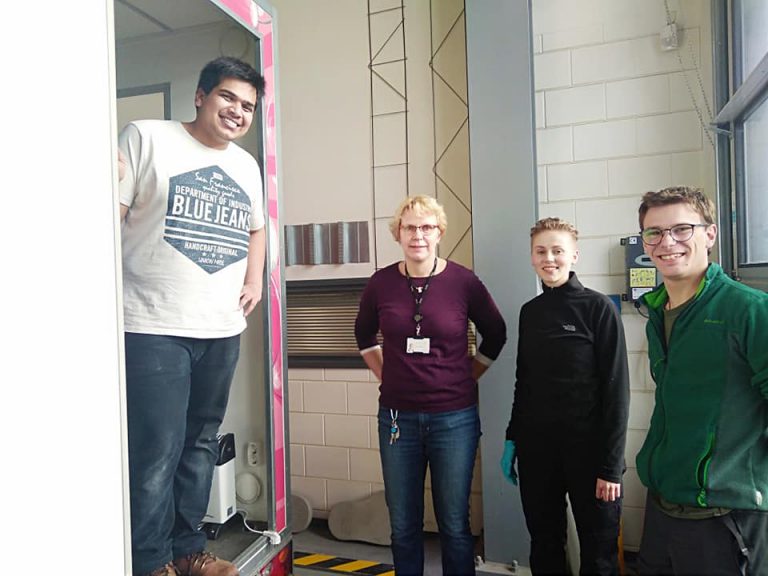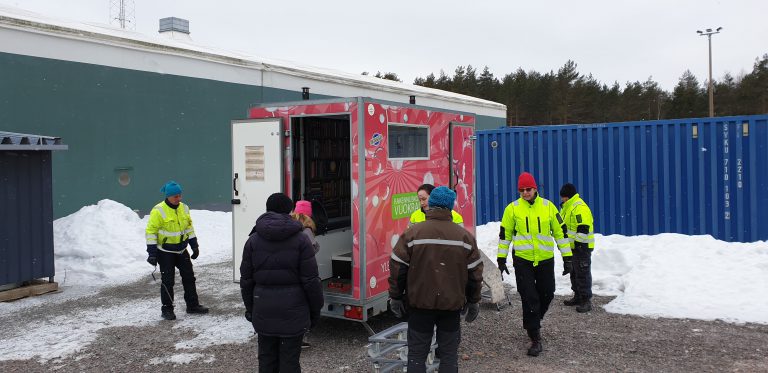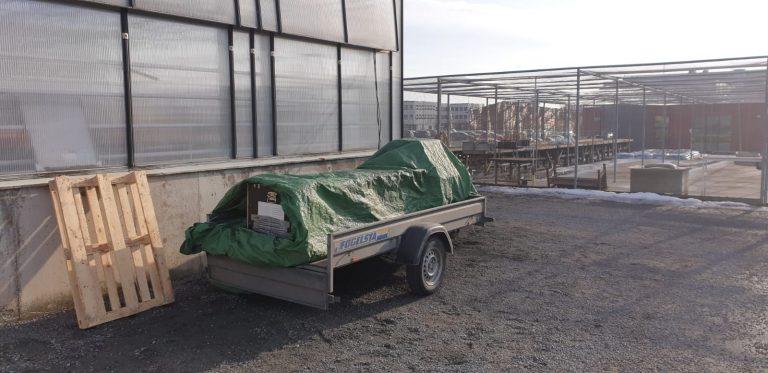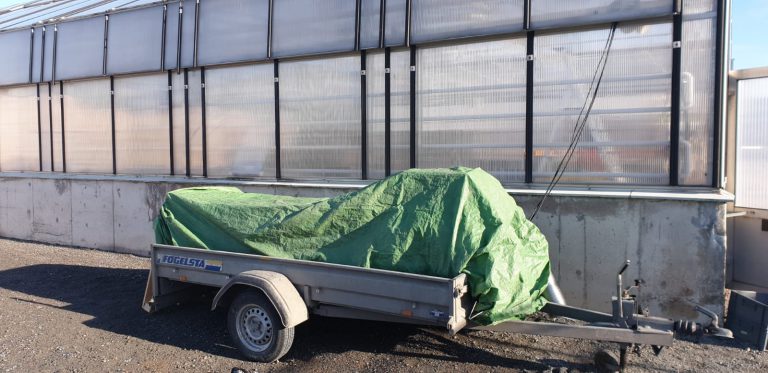Vi letar efter en motiverad och entusiastisk student som kan hjälpa till att utveckla en datormodell som simulerar effekterna av olika teknikval för hantering av avloppsflöden. Modellen kommer att införlivas i ett seriöst spel som vi utvecklar för att vägleda sanitetsplanerare och beslutsfattare. Spelet är ett flertal intressenter, rumsligt planeringsspel för kommunal sanitet som fokuserar på resursåtervinning. Det möjliggör en visuell representation av vilken teknik som kan användas och vilka resurser som kan återvinnas från sanitetsanläggningar.
Examensarbete: identifiering av logistik för nya produkter för sanitetssystem
Föreslagen titel: Identifiera effektiva transportsystem och logistik för nya sanitetssystem som producerar gödningsmedel från mänskligt avfall.
Högskolepoäng: 30 hp; Nivå: Avancerad
Ämne: Teknologi eller miljövetenskap
Start: Så snart som möjligt
Bakgrund: Inom sanitetssektorn finns det ökande erkännande av att vi brådskande behöver förändra hur vi hanterar, behandlar och återanvänder människoavfall i vår miljö. Vid Sveriges lantbruksuniversitet (SLU) har forskargruppen för miljöteknik utvecklat ‘urintorkare’, en spännande ny teknik som omvandlar flytande människourin till en hygienisk, kommersiell kvalitet, torrgödsel. Tekniken innefattar två steg, (a) använda en urinsorterande toalett hemma, för att separat samla urin utan avföring; och (b) torkning av urinen i ett alkaliskt substrat som placeras i urintorkaren.
Project opportunity: Life cycle assessment of large scale fly larvae composting in Swedish conditions
 Photo: Viktoria Wiklicky
Photo: Viktoria Wiklicky
Titel: Livscykelanalys av fluglarvskompostering under storskaliga svenska förhållanden
Title:Life Cycle Assessment of Large Scale Fly Larvae Composting in Swedish Conditions
Credits: 30 credits
Level: Advanced
Subject: Technology or environmental science
Start: As soon as possible
Projektmöjlighet: Livscykelbedömning av komposit i stor skala av fluglarver under svenska förhållanden

Foto: Viktoria Wiklicky
Titel: Livscykelanalys av fluglarvskompostering under storskaliga svenska förhållanden
Title: Life Cycle Assessment of Large Scale Fly Larvae Composting in Swedish Conditions
Högskolepoäng: 30 hp
Nivå: Advancerad
Ämne: Teknologi eller miljövetenskap
Start: Så snart som möjligt
Bakgrund
Fluglarvskompostering (FLC) är en relativt ny och mycket effektiv metod för behandling av matavfall. Behandlingen utförs med amerikanska vapenflugslarver (Hermetia Illucens). Larverna är mycket effektiva när det gäller att utvinna de näringsämnen som finns i matavfallet och samla dem i sin egen biomassa. Behandlingen varar i två veckor, varefter larverna separeras från behandlingsresten. Behandlingsresten kan användas på samma sätt som traditionell kompost, men den är mer rik på kväve. Larverna kan användas på olika sätt. Optimalt kan de användas som foder för produktionsdjur, fiske och som husdjursfoder, men nuvarande lagstiftning begränsar deras användning. I nuvarande lagstiftning kan larver som odlas på matavfall användas som husdjursmat, råmaterial så som proteiner, oljor och kitin och som högkvalitativt underlag för biogasproduktion. Inom en kort tid får larver som odlas på grönsakssubstrat användas som foder i fiskodling och eventuellt i fjäderfäproduktion.
Problemformulering
Forskning om FLC har utförts beträffande substratomvandlingen och larvernas sammansättning. Forskning om miljökonsekvenserna av FLC och särskilt på energibehovet och växthusgasutsläpp vid storskalig avfallshantering är fortfarande mycket begränsad. Storskalig FLC befinner sig i genomförandefasen i Sverige med ett pilotanläggningsreningsverk som etableras i Eskilstuna vid Eskilstuna Strängnäs Energi och Miljö AB avfallsbehandlingsanläggning. En del av genomförandet av detta pilotprojekt är att utföra LCA för FLC-behandling av livsmedelsavfall. Detta examensarbete kommer att ge ett stort bidrag till denna bedömning.
Utförande
Miljöteknikgruppen har forskat på FLC under många år och har samlat in nödvändiga data för att utföra en LCA-studie av FLC-avfallsbehandlingssystemet.
Utsläppsuppgifterna från två projekt kommer att analyseras. Luftningsbehovet som beräknas i ett annat projekt kommer att användas som underlag för att utvärdera energibehovet i pilotprojektet som inrättas vid Eskilstuna. Temperaturdata från tidigare experiment kommer att användas för att uppskatta värmebehovet under olika säsonger under svenska förhållanden. De olika användningsfallen av larver kommer att jämföras baserat på exemplen som presenteras i bakgrundssektionen.
Det förväntade studieområdet skulle vara att beräkna utsläpp av växthusgaser och primär energianvändning bilda storskalig fluglarvskompostering i förhållande till andra avfallsbehandlingsalternativ som rötning och kompostering. Eftersom denna behandlingsmetod har potential att producera djurfoder från avfall, skulle detta vara ett viktigt fokus i studien.
Kompetens och erfarenhet
Tidigare erfarenhet av LCA och/eller avfallshantering är önskvärd, men inte obligatorisk.
Kontakt: Mattias Eriksson eller Evgheni Ermolaev, Institutionen för energi och teknik, SLU
Email: mattias.eriksson@slu.se eller evgheni.ermolaev@slu.se
Telefon: 018-671732
Sverige till Finland – urinsorteringspiloten på resa!

All loaded up and ready to leave! PC: Anooj Ramanathan
Den 25 mars gav sig tre av gruppens medlemmar, Prithvi Simha, Giulio Zorzetto, och Caroline Karlsson av till Finland med en släpvagn fullastad med komponenter som bildar ett urinsorteringssystem. De tog nattfärjan och nådde destinationen nästa dag, då de fortsatte resan till Tammerfors. På plats i Tammerfors ska de nu med hjälp av den finska parten av projektet installera komponenterna i en portabel toalett. Urinsorteringssystemet beräknas vara igång första veckan i mars.

At the Tampere University of Applied Sciences with Eeva–Liisa Viskari . PC: Sari Huuhtanen
Pilotprojektet för urintorkningen i funktion

Setting up the toilet at our test site and final touches
Efter en veckas tid i Tammerfors, Finland var gruppen klara med installationen av urintorkningssystemet i Biomajatoaletten. Systemet inhyses i en portabel trailer som innehåller en pissoar och en urinsorterande torrtoalett. Urinen behandlas genom alkalinisering och koncentrering, en metod som har tagits fram och utvecklats av vår forskargrupp under flera års tid. Urintorkningen, som upptar en yta på endast 0,75 m2, har kapacitet att omvandla 30 l urin per dag till ett torrt gödsel med hög näringsämneskoncentration.
Den fjärde mars transporterade gruppen och övriga parter i MORTTI-projektet toaletten 100 km väst om Tammerfors. Toaletten är nu i bruk och tanken är att användningen ska fortskrida åtminstone tre månader till.
Att konstruera ett pilotsystem för urintorkning
Kretsloppstekniksgruppen har sedan början av året jobbat på att konstruera ett pilotsystem för urintorkning. Flera medlemmar i gruppen har deltagit i utformandet, byggnationen, simuleringen samt testandet av systemet, som har kapacitet att behandla 30 l urin per dag på en yta mindre än 1 m2. Under perioden utfördes flera experiment både inom- och utomhus, se bilderna ovan. Idén är att systemet ska installeras i en portabel toalett i Finland under första veckan av mars med målet att behandla 30 l urin per dag.
Flera uppdateringar kommer!
Kristina Lundgren, M.Sc. thesis on pretreatments in BSF composting
I slutet av Januari presenterade Kristina Lundgren sitt examensarbete på Uppsala universitet. Målet med exjobbet var att öka förståelsen kring hur bakterier påverkar fluglarvskompostering med den amerikanska vapenflugan. I projektet isolerades bakterier från den amerikanska vapenflugans ägg vilka sedan ympades in i matavfall strax innan larver tillsattes. Resultaten pekade på att varken överlevnaden, total larvbiomassa eller materialreduktion påverkades av tillsats av bakterier till substratet. Variationen i resulterande larvbiomassa och materialreduktion minskade dock när en eller flera bakterier ympades in i matavfallet. Därmed blev systemet mer förutsägbart vilket är särskilt intressant för uppskalning. Att fluglarvskompostering kan användas för att producera värdefulla produkter from organiskt avfall intresserade många i publiken. Både storskalig produktion och bakteriers potentiella positiva effekt i andra substrat diskuterades efter presentationen.
Kristina Lundgren, M.Sc. thesis on pretreatments in BSF composting
Just at the end of January, Kristina Lundgren presented her master thesis at Uppsala University. The aim of the thesis was to increase the understanding of how bacteria may affect fly larvae composting with the black soldier fly. The results showed no significant impact on the survival, final biomass or reduction of substrate when bacteria isolated from BSF eggs where inoculated into the substrate (food waste). However, interestingly the variation in resulting biomass and material reduction was decreased when any bacteria or group of bacteria were added to the food waste. Hence, the system became easier to predict, which especially is desirable when scaling up the system. The audience seemed intrigued by fly larvae composting as a waste management tool and had questions both regarding large scale facilities and the possibility that inoculation bacteria might yield positive effects in other substrates.
The urine drying pilot is operational

Setting up the toilet at our test site and final touches
After a week in the city of Tampere in Finland, our team over there finished integrating a urine drying bed into the Biomaja toilet. The entire toilet is on a trailer, making it portable and houses a dry urinal and a urine diverting dry toilet. The urine treatment is done by alkaline dehydration, a technology developed by our research group and which we have been pursuing for several years now. The urine treatment unit requires an area of just 0.75 m2 and has a capacity of processing 30 L urine/day into a dry, nutrient-rich fertiliser.
On the 4th of March, members of our group that travelled to Finland, along with partners from the MORTTI project transported the integrated toilet 100 km west of Tampere. The toilet is now very much operational, and is intended to be used for a period of at least 3 months.


